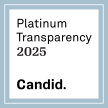Bridging Well-Being, Blood Sugar and Nutrition

Well-being is a critical measure of success in the foundational human pursuit of achieving higher levels of thriving. Well-being is preciously valued and strived for around the world. For many people, it is the name of the game of life. High levels of well-being require optimal physical, mental, and emotional health integration. Unfortunately, given North America’s poor state of physical health, relatively few individuals can truly and deeply thrive.
Blood sugar dysregulation is one of the most widespread threats to health and, therefore, well-being. Blood sugar dysregulation can lead not only to type 2 diabetes but also to cancer. It also directly interferes with well-being by inducing unpleasant side effects. Although high blood sugar is a severe metabolic disorder, it can be mitigated through diet if addressed soon enough. By addressing blood sugar dysregulation, higher levels of well-being can be achieved and sustained.
How does one’s inner landscape change when faced with excessive thirst, lethargy, headaches, or blurred vision? Is it possible to enthusiastically engage in the world when combating these symptoms? The simple answer is no.
High blood sugar symptoms directly interfere with well-being. They interrupt focus, energy levels, and even temperament. High blood sugar takes the reins of life and steers life’s trajectory away from engaged activity and towards uncomfortable inactivity. High blood sugar increases the risk for many diseases, including cancer. In fact, it can increase development risk by up to 40% for specific cancers. That is to say that high blood sugar not only interrupts immediate wellness by producing unpleasant symptoms but also interrupts long-term wellness by promoting disease progression.
When it comes to nutrition for blood sugar management, there are a few significant concepts to be familiar with. The first is understanding the effects of the primary three macronutrients on blood glucose.
- Simply stated, carbohydrates produce the most significant increase in blood sugar. However, the higher the amount of fiber within the carbohydrate, the slower and lower the rise in blood glucose will be. This is because some of the carbohydrate material may be indigestible or may change the viscosity of the consumed carbohydrates so that the absorption slows.
- Like fiber, fat consumption also lengthens the time it takes for sugar to enter the blood stream. This is because it slows the rate of absorption.
- Finally, protein tends to have a very subtle effect on blood sugar. Due to the fact that protein stimulates insulin secretion, it can even cause blood sugar to drop in people whom are sensitive to insulin.
The second primary concept involves the timing and balance of eating. The bloodstream will only offload as much metabolic material as the surrounding tissues can take up. As a result, it’s essential that the consumption of potential energy (sustenance) matches the energy required for life maintenance and the additional activities performed.
Due to the inherent problem of energy distribution after ingesting large quantities of food and drink, it is beneficial to eat smaller meals throughout the day. This may vary depending on lifestyle, of course. Eating smaller meals can help to ensure only a moderate increase in blood sugar instead of a destructive spike. Along with eating smaller meals, eating balanced meals (an appropriate mix of carbohydrates, fat, and protein) is essential for managing blood glucose. If the meal or snack contains moderate to low levels of fibrous carbohydrates, healthy fat, and moderate protein, the chance for a dangerous spike is lessened.
High blood sugar compromises health and well-being and can lead to diabetes and cancer. Luckily, risks can be minimized through healthy and balanced eating that respects macronutrient density, amount, and timing.
References:
- https://www.ncbi.nlm.nih.gov/pubmed/19620249/
- https://www.ncbi.nlm.nih.gov/pubmed/24219323
- https://www.ncbi.nlm.nih.gov/pmc/articles/PMC2769652/
- https://www.ncbi.nlm.nih.gov/pmc/articles/PMC3641532/
- https://www.ncbi.nlm.nih.gov/pmc/articles/PMC4209346/
- https://www.ncbi.nlm.nih.gov/pmc/articles/PMC4320469/
- https://www.ncbi.nlm.nih.gov/pmc/articles/PMC4677694/
- https://www.ncbi.nlm.nih.gov/pmc/articles/PMC5564840/













